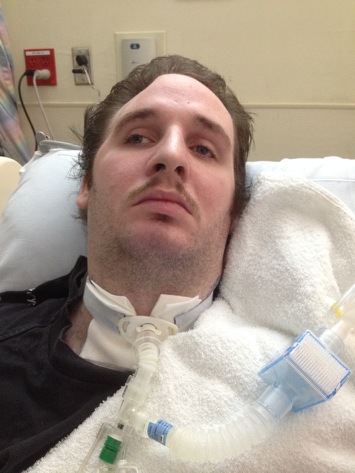Citizen Review Board May Investigate Use of Police Taser on Matthew Shaun Murphy Three Years Ago
by Arnaud and Naja Girard…….
It was early morning July 6, 2000. In a dark alley in Key West, Officer Michael Beerbower had Daniel Holte Stambaugh, 22, handcuffed in the back of his police cruiser. Beerbower was on top of Stambaugh’s co-defendant Jessie Gene Gregory, 19, also handcuffed. Other officers were standing watch. When they yelled, “Clear!” (it meant that there were no witnesses) Beerbower would allegedly then go on, alternately punching Gregory and then Stambaugh in the face.
But that “private” police matter would come out in The Blue Paper and later in the New York Times. In spite of public indignation, the police department appeared unwilling to fire or even discipline any of the officers involved. Public discontent grew into a grass roots movement to create an independent board overseeing the Key West Police Department. A referendum passed with 60% in favor on November 2, 2002. The CRB (Citizen Review Board) was born.
Today, over 10 years later, in the midst of another KWPD scandal (again getting national attention) some CRB members have begun to question whether the Board should wait any longer to start tackling the issues.

“We are obviously very concerned with what happened to Charles Eimers and now I have concerns over what happened to Matthew Shaun Murphy,” says Tom Milone, a CRB board member since 2011. Eimers died after being arrested by KWPD officers last Thanksgiving and Murphy, who was tased by police on Duval Street three years ago, is still in a hospital bed unable to walk , talk, or feed himself.
Milone has proposed that a special meeting of the CRB be set for sometime this month to discuss whether or not the Board should investigate the police incident involving Murphy.
Many people feel this could be a turning point; the moment of truth for the CRB. “This is what the CRB was created for,” says Christine Russel, a well known local government watchdog, “If they don’t take on this case, I think people will believe the CRB has become irrelevant.”
The CRB’s relationship with KWPD and especially the police union [Police Benevolent Association – PBA] has been tense from the start, “We have subpoena power, but I don’t believe we’ve ever used it,” says Milone, “We usually invite police officers to come tell their side of the story, but they rarely show up.”
So what can the CRB really do? “We have an attorney, board members with law enforcement experience, an executive director, and money,” says Milone, “Based on the information we have so far, FDLE did not investigate what happened to that young man [Murphy] and I think we should know more about it.”
Charles Eimers’ death is still under investigation with FDLE; but the Murphy incident is not.
“There’s no reason why the CRB couldn’t look into what happened in the Murphy case,” says Milone, “I have many questions. I think we need to address what the proper procedure for deployment of a Taser is and we need to know if the proper procedure was used.”
Florida Statute regulates the use of police Tasers,
943.1717 Use of dart-firing stun guns.—
(1) A decision by a law enforcement officer, correctional officer, or correctional probation officer to use a dart-firing stun gun must involve an arrest or a custodial situation during which the person who is the subject of the arrest or custody escalates resistance to the officer from passive physical resistance to active physical resistance and the person:
(a) Has the apparent ability to physically threaten the officer or others; or
(b) Is preparing or attempting to flee or escape.
It does appear that resistance to the officer is an absolute requirement. What if the person being tased didn’t even know the officer was there?
“There is an important factual issue in this case as to what kind of warning, if any, was given to Murphy that night before he was tased and suffered that horrible injury.” says Milone.
“Another big issue,” he observes, “is that it appears that most of the eyewitnesses were not interviewed and that police officers didn’t even take down their contact information. It is very hard to find out the truth if witnesses are not identified and interviewed.”
We asked Milone if he thought the CRB should question FDLE. “The CRB doesn’t have jurisdiction over FDLE, but they signed an agreement with the City obligating them to investigate any death or serious injury that occurs as a result of any KWPD officer’s interaction with a suspect. I think we have the right to ask them about their part of the bargain and about why they didn’t investigate.”
FDLE sent Special Agent Paul Marcus to Jackson Memorial Hospital two days after the tasing. Marcus described finding Murphy “listed in critical condition and observed to be on a ventilator.” Yet the same 14-line “report” concludes with, “no other investigative steps were taken.” According to FDLE that was the extent of their involvement in the matter. The agreement between the City and FDLE clearly requires FDLE to investigate any death or serious injury inflicted by KWPD officers.
One fascinating aspect of the Murphy case is that it seems to be the model, the ‘crystal ball’ revealing what would have happened in the Eimers investigation, had the press not become aware of it.
It looks as though the first thing police officers do when there’s any trouble is to chase the civilian witnesses away under the cover of “crowd control.” In Murphy’s case, it appears they even chased away a prime eyewitness, his fiancé, who says the officer scared her off with his Taser. The second move is to overwhelm the crime scene with as many officers as are available (up to 13 in the Eimer’s case). Those officers would then become the prime witnesses.
Then begins the “investigation” of true Kafkaesque dimension. Granted, in Murphy’s case, law enforcement personnel didn’t have an opportunity to lose a body of evidence on a conveyor belt headed toward cremation, instead they simply pretended that Murphy was gone – at large – a fugitive from the law. Rather than investigating, they listed him as a ”wanted person.”
There are many unanswered questions in the Murphy case:
- Why is Chief Donie Lee insisting that the officer had yelled “verbal commands to separate and stop fighting” when this fact is contradicted not only by eyewitnesses, but even by the police incident reports [including the on-duty supervisor’s after the fact review.]
- Was there “resistance” on Murphy’s part sufficient to allow the use of a Taser?
- Why is Murphy on the “wanted list” and who should be paying his hospital bill?
- Why is there no record containing all eyewitness contact information and testimony?
The CRB may decide this month whether or not to get involved.
Stay tuned.
~~~~~~~~~~~~~
For all Blue Paper coverage regarding Matthew Shaun Murphy click here.
DID YOU LIKE THIS STORY? SUPPORT THE BLUE PAPER
Help us continue to bring you local investigative journalism… Click on the image to make a donation [NOT tax deductible].



